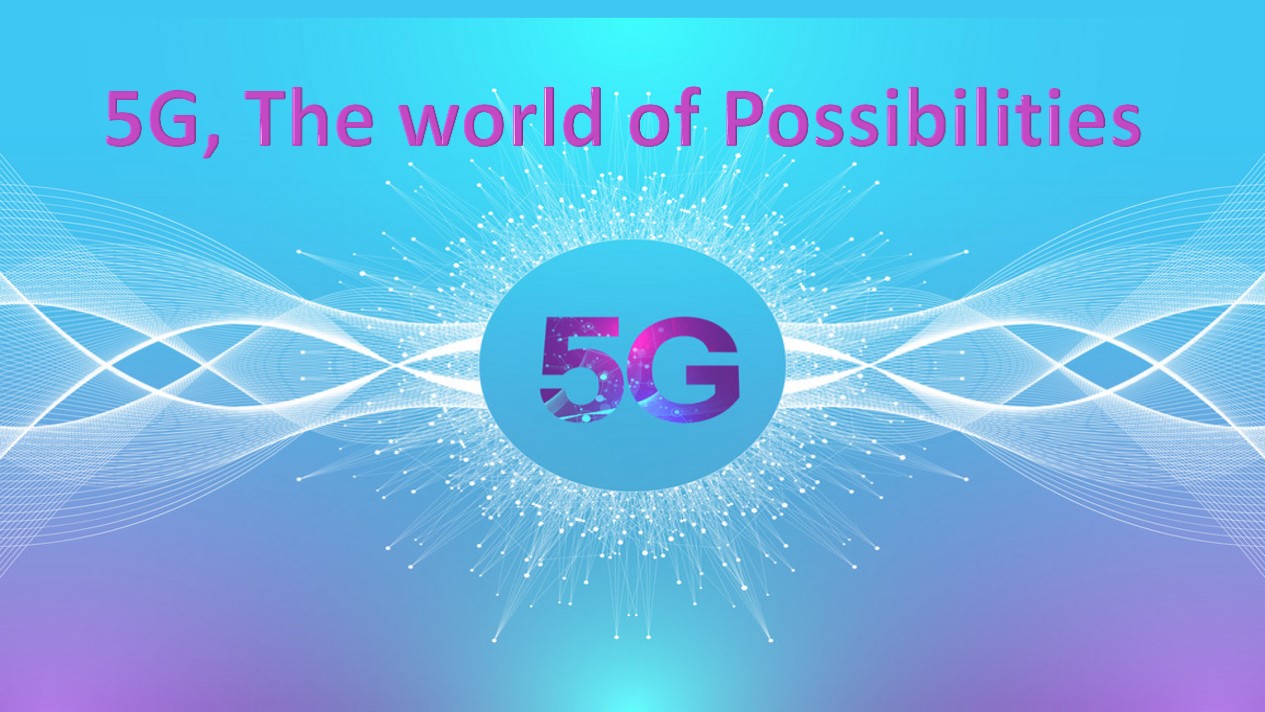5G, The world of Possibilities

Gearing up
We just concluded the 5G Spectrum Auction in India and 5G rollouts in India are around the corner. So, we may get some natural questions on what 5G brings to the table and how it is different from previous generations, what new use cases it enables, and how retail customers, Enterprise customers, and Mobile Network Operators are going to get benefitted out it.
5G is not new to the world and has been available in some countries for a while and learnings from those networks are going to help India deploy better networks.
A lot of new telecoms, IT/ITES, and Startup companies are entering into this space and this 5G space is buzzing with a lot of excitement.
In this article, we will try to understand what the current status of 5G Rollouts in India is, what makes 5G so exciting, what new use cases it is going to enable, what new capabilities users can expect and what business opportunities it is going to bring to the companies.
Spectrum Auction
This was one of the biggest spectrum auctions and the total bid amount 1.5 Lac Crores INR. The total spectrum on offer was 72 GHz and 71% i.e. 51.2 GHz was sold. The three major bidders were leading private MNOs of India i.e. Reliance Jio, Bharti Airtel, and Vodafone Idea.
Adani Group was a surprise entry, but it bid only for a very small chunk of spectrum for Private Network use only. The below data suggests the major spectrum buys for all these players.




However, Jio was the only company that acquired a 700 MHz band spectrum in all 22 circles. This is considered a very important decision as 700 MHz can give much higher coverage compared to other bands which were available for buying. This is one step that can help Jio to acquire 2G customers of Airtel and Vodafone.

Way forward
By looking at the outcomes of the spectrum auction, Jio looks like a clear winner followed by Airtel. However, it may not be easy as it looks. Vodafone Idea is still struggling with cash flows and may take some time to become relevant in this game. Adani group has still not opened all its cards and we should be ready for some more surprises coming from Adani Group.
Both Jio and Airtel are rushing for early rollouts and new announcements are made every week. Both are getting into a lot of strategic partnerships to build the ecosystem around 5G, be it Jio Partnering with Google for budget phones or Airtel partnering with IBM and Red Hat for building secure Clouds.
Undoubtedly, 5G offers multiple times higher speeds and lower latencies compared to 4G and it has started enabling some interesting use-cases globally that are changing the lives of millions of people and building new revenue streams for Mobile Network operators.
It comes with a lot of features like Software controlled networks, Logical sectioning of networks referred to as Network Slicing, and distributed cloud infrastructure referred to as Multi-Access Edge computing (MEC).
In addition to these, we have new promises of Private networks, Open and Secure Networks, Network Exposure for third-party access, and interworking with most of the other technologies like 4G, WiFi, Wireline, etc. However, there is limited backward compatibility with 2G and 3G networks to help Mobile Network Operators to scrap those networks gradually.
One of the important aspects of 5G technology is to introduce several new bands of frequency
spectrum suitable for wireless mobile communication from low bands to mid bands to higher bands. The radio spectrum is a precious resource and 5G is trying to make use of these spectrums in the best way possible. Licensed spectrum is a precious resource, so more and more efforts are being done for building new capabilities around unlicensed bands as well as higher bands called millimeter waves.
We may wonder what the benefits of 5G could be unless we have new applications that
will need these higher speeds and lower latencies that 5G has to offer. As we are unlocking the possibilities of 5G, let’s understand why 5G is a promising thing for India Inc. –
More opportunities for Indian IT Companies
India was already a superpower in the Software industry for a decade, accounting for more software exports than oil imports. However, when it comes to Telecom technologies, we were one of the last few countries to adopt new technologies because of price-sensitive markets. In fact, we never contributed much to the global telecom standards landscape except by contributing in the background and building some Network Operations Centers for managing global networks.
However, with the software-centric networks and Cloud play, India is becoming the epicenter of Telecom technology discussions and more and more companies setting up their base and building their engineering teams in India, is going to change how India contributes to the world of Telecom. Some new initiatives like Production Linked Incentive Scheme (PLI) for Large Scale Electronics Manufacturing and the Semiconductor manufacturing push are some of the things which are going to give India a bigger opportunity.

Need for Speed
India is already the highest data-consuming country in the world, and it is going to grow further. Content consumption is increasing day by day and more and more vernacular content is fueling its growth. The average Mobile monthly data consumed per user In India is 17 GB, which grew 50% In the last 5 years, and it is expected to touch 40-50 GB per month by 2025. This growth mainly comes from more video consumption and the popularity of social media on the go. Even the video quality is changing from Standard Definition (SD) to High Definition (HD) and beyond. India has a massive rural and semi-urban population which was untouched in the previous generation (2G/3G) networks that got connected to the internet with 4G and is expected to grow further with 5G.
Recent growth in EdTech because of covid has given further growth to Mobile Networks Operators. For example, the current K-12 school system in India is one of the largest in the world with more than 1.4 million schools with 250+ million students enrolled who are now getting connected to the world of the internet.
Let’s Play
Mobile gaming or Online gaming getting very popular in India and more people are using these kinds of applications. Augmented Reality, Virtual reality is giving an immersive experience to these users while using these gaming applications.
As per the report of KPMG, India is expected to become one of the world’s leading markets in the gaming industry. Growing steadily for the last five years, it is expected to treble in value and reach $3.9 billion by 2025. The total number of online gamers grew 8% from 360 million in 2020 to 390 million in 2021.
OTT (Over-The-Top) applications dominate all other modes of communications
Telecom networks are transforming into service networks compared to just providing connectivity to users. For example, Jio has a big bouquet of services which includes Instant messaging, Video, Movies, Books, News, Music, and what not. Airtel is also working in a similar direction either with some in-house expertise or some strategic partnerships. They are also collaborating with companies like Netflix, Prime Video, etc to give a better experience to their users. Many of these services are bundled with their prepaid or postpaid plans.
5G Private Networks
With a lot of these new requirements from new use cases of 5G networks, achieving diverse performance requirements may not be possible in public networks. So, there is a lot of traction for deploying many of these use cases in private networks referred to as Private 5G or NPN (Non-Public Networks). These private networks can be completely isolated from public 5G Networks and can be integrated with Public Networks. Even Networks Slices can be used as a private network in some scenarios. China has already deployed more than 5000 private networks.
5G auction in India has already given licenses for deploying Private or Captive Networks and we may see a lot of Private networks being built in India as well.
Industry 4.0
Networks till 4G were mainly targeted towards the end user for providing Broadband data rates to them. However, that remains one of the focus areas by providing much higher network peak data rates of 20 Gbps in 5G compared to 1 Gbps in 4G Networks, there is a lot of work is done on connecting devices, industries, and enterprises. With the introduction of some new service verticals in 5G like mMTC (Massive Machine Type Communication) which connected millions of devices, uRLLC (Ultra-reliable Low Latency Communication) which gives very reliable and fast networks, and V2X (Vehicle to Everything) to connect millions of vehicles, 5G takes a leap on the services offered by 4G Networks. Specifically, mMTC and uRLLC are going to change the way how cities and factories are imagined where devices, machines, and robots work in a closely connected environment and operate autonomously.
Smart factories will have the ability to manage production and allow companies to optimize the resources used and improve the quality of products.
Summary
In this article, we have looked at the big picture of the possibilities which are unlocked by 5G without getting too many technical details. We may see full fledge 5G networks in India and Reliance Jio and Bharti Airtel will be front ending this. These networks are going to be massive networks in the world and will set up some examples of how to build networks of this scale.
At the same time, 5G brings a lot of new opportunities to Users, Enterprises, and Mobile Network Operators.
Exciting times ahead!!
Author:

Sanjay Kumar
Director – Telecom
Skill Lync
Sanjay Kumar is a Senior Telecom & Cloud (AWS) Training Professional with 20+ years of experience in Telecom/Cloud Training, Operations & Maintenance, Projects, and Training Content Development, Telecom R&D and testing etc. He is also an AWS Certified Solution Architect – Associate and AWS Authorized Instructor (AAI).
Published in Telematics Wire





